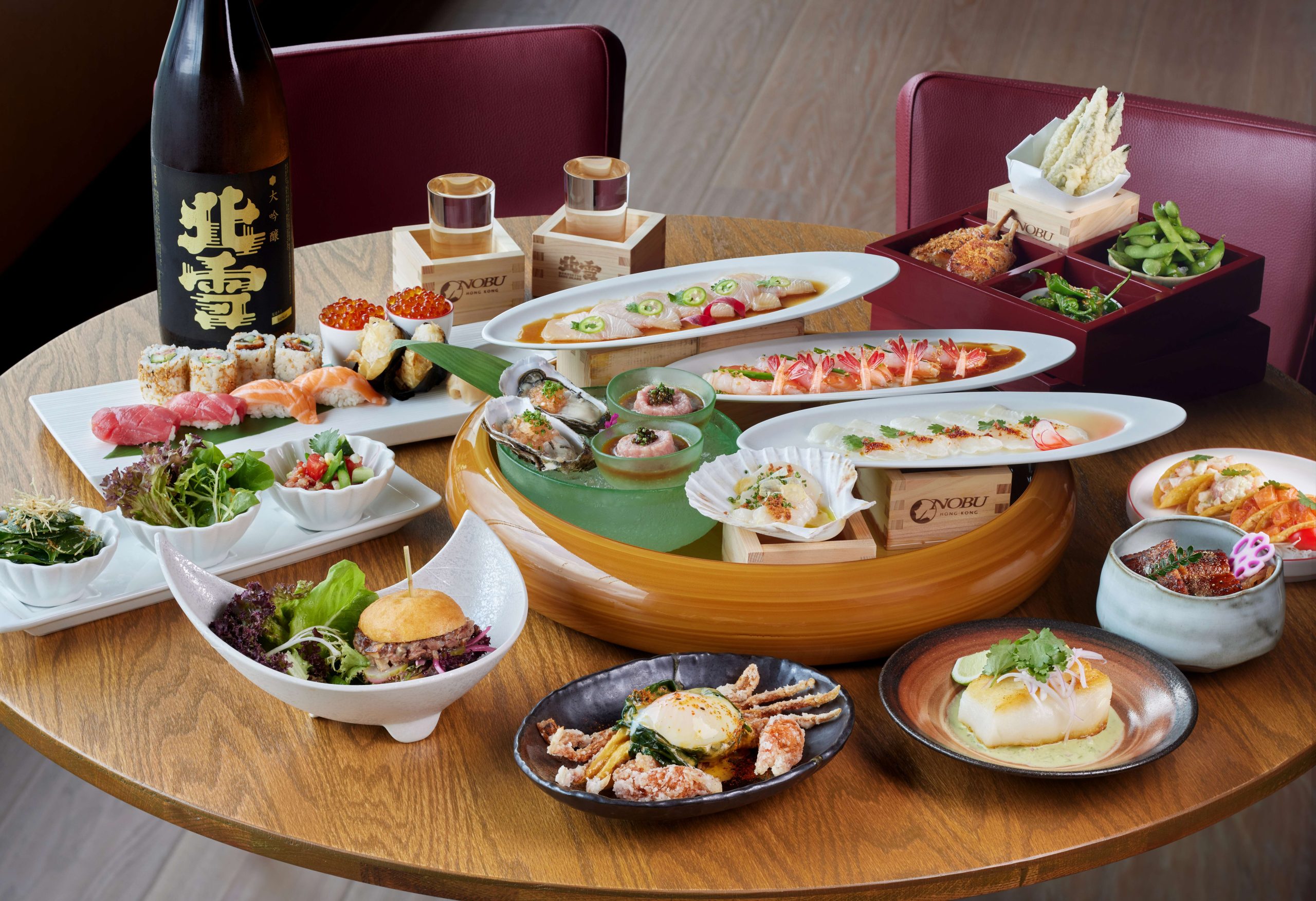With its carefully preserved setting, exquisite traditional architecture, artfully landscaped grounds and refined Japanese fare, to stay at the Park Hyatt Kyoto is to enter another era altogether. Zaneta Cheng lives the fairy tale
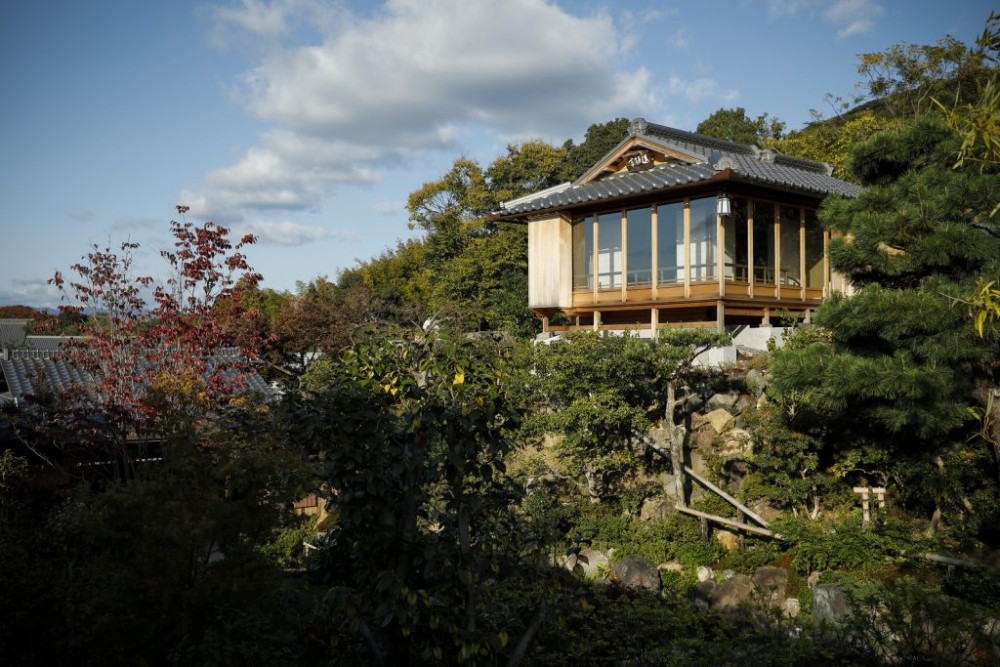
It takes me three and a half minutes to walk from my room to The Living Room of the Park Hyatt Kyoto at pace. I timed it because I’m constantly running late while I’m here, but for reasons I’ve pondered, and which I’ll explain, I have had no real desire to hurry up for the duration of my stay.
First and foremost, the property is a collection of machiya townhouses that blends in with its surroundings. It’s located in the heart of Kyoto’s carefully preserved Higashiyama district, an area which was for a thousand years where Japanese royalty and nobility built their resort homes, setting them on the forested hills of the area in order to live as one with nature, and which remains the home and workplace of some of the area’s best craftsmen and artisans. No buildings in the area can be built taller than 10m, which meant the hotel expanded out rather than up. Designed using the Japanese architectural concepts of oku to tsugi, meaning “depth and next”, each space gives way to a series of small rooms and corridors that open and close behind guests, taking them ever deeper into the tranquil bowels of this luxury guesthouse.
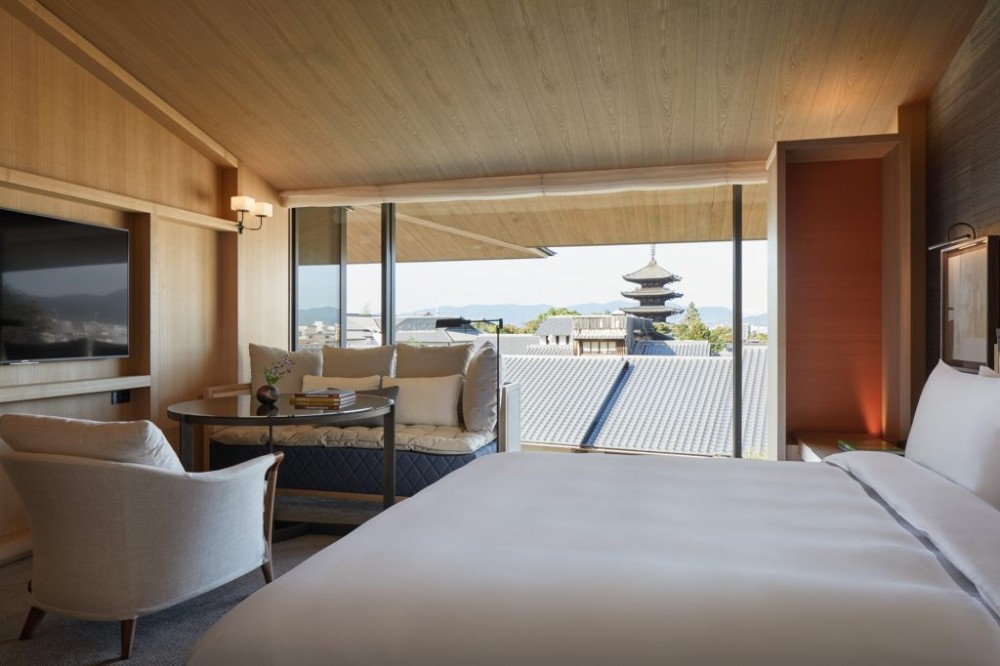
The Living Room (referred to as a lobby in other hotels, but not this one) with its gold-leaf ceiling leads to a set of lifts at the back, which bring guests up to a tearoom. It’s a modern tearoom flanked by floor-to- ceiling windows overlooking Hokan-ji Temple’s Yasaka Pagoda. The view shows the roofs of the impeccably kept machiya townhouses leading to more modern buildings further afield, marked by the distinctly modern Kyoto Tower in the distance. Even here, guests stop for photographs as they wait for the lift to take them to the public space. There’s not one time, even as I’m running late, that I don’t stop for photos either. Every angle of the long, sunlit room looks out onto a picture-perfect, photo-compelling scene.
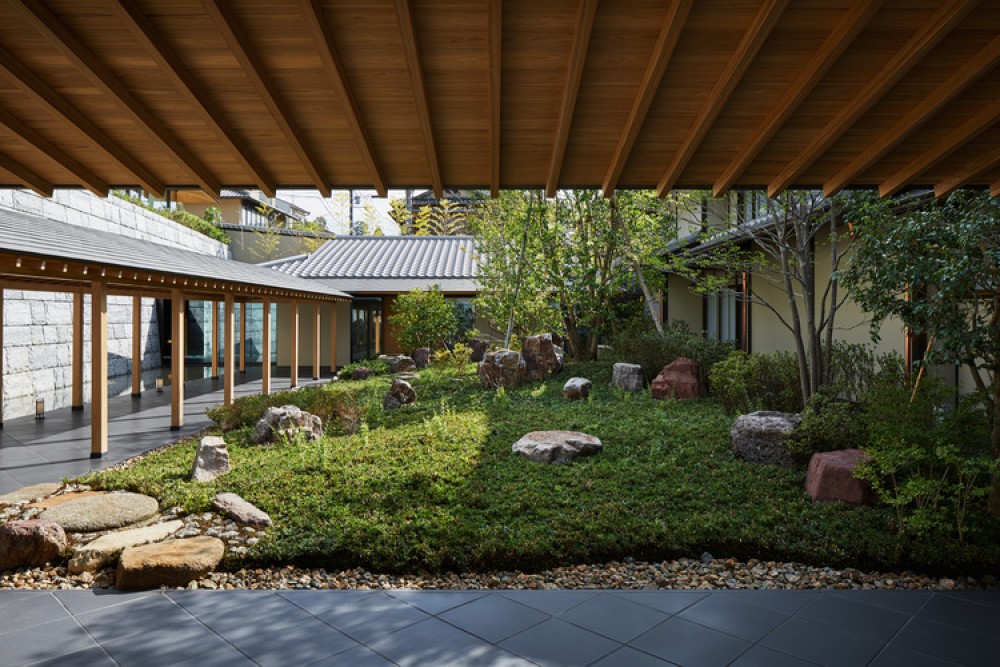
Through this tearoom, automatic sliding doors whir open to a covered, outdoor corridor that, to the left looks onto the back garden of Kyoyamoto, the renowned Michelin-starred kaiseki restaurant that’s been in operation since 1877. Another automatic sliding door opens to the hotel’s library, where the books have been curated by Tony Chi, who took part in the hotel’s design alongside developer, designer and construction company Takenaka. And it’s here that hotel guests finally arrive at the lifts that bring us to our rooms.
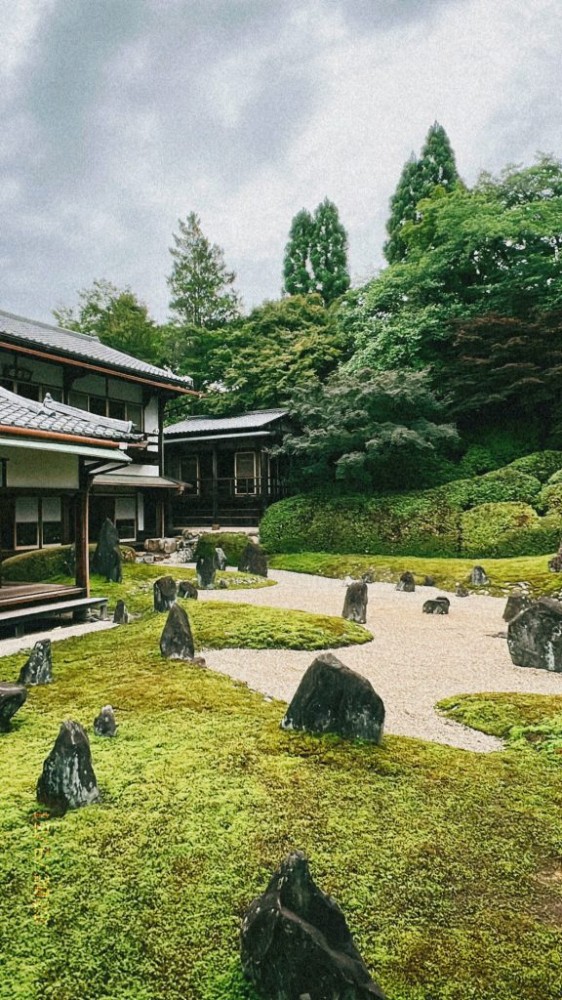
So far, I’ve only explained the actual logistics of it. I can tell you that past the lift, there are long winding corridors that snake out to the rooms, adding seconds to the clock. But I haven’t quite yet conveyed the sense of quiet and removal from the world that the Park Hyatt Kyoto and its designers have managed to create. Take the room corridors. They’re dark and the shutters are drawn so that the lanterns, which are placed outside every room, give off a warm glow in the dark. From the library onwards, the lights are slowly dimmed, lulling me into a state of serenity. When rooms are being serviced by housekeeping, rocks bound with rope are placed in front of the doorway, taking inspiration from surrounding Zen monasteries that place rocks in front of temples when they’re being cleaned.
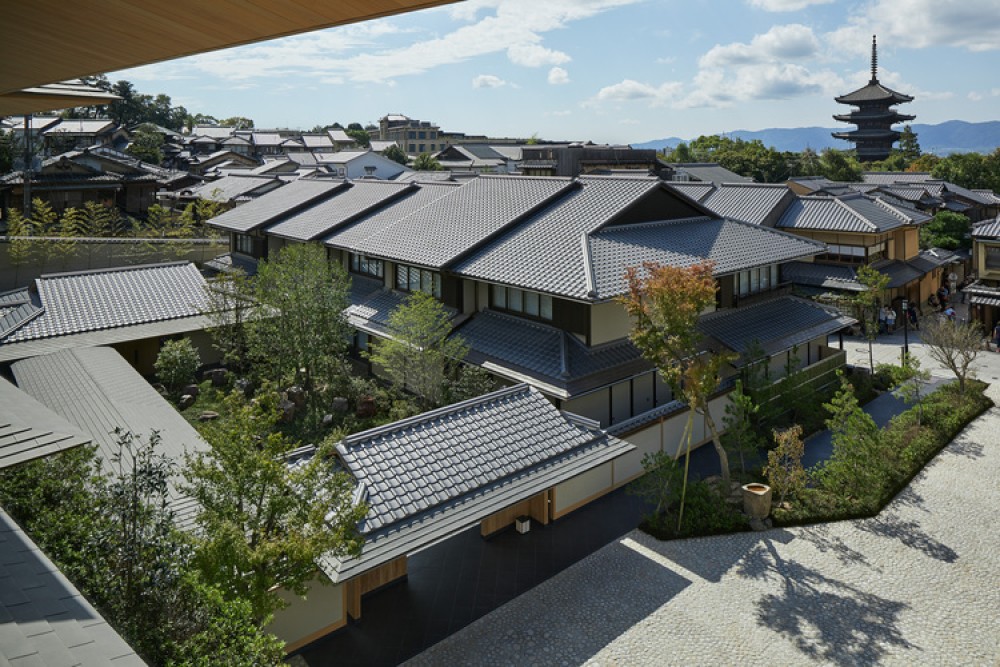
Tamo wood, which gives off its own unique soothing scent, is used in the rooms, which either look out at the street or face a sheer wall done in the style of Zen gardens. All of the rooms are clad in warm woods and black and white marble, sourced from a mountain in China for its pattern that resembles Japanese calligraphy strokes. The rooms all come with a bed, a seating area, a round table near an outlet so it works as both a dining and working surface, a minibar tucked into a traditional Japanese cupboard done with intricate woodwork and a walk-in bathroom. The theme, I’m told, for the whole hotel is that of golden slumber, so pray, how is anybody to make it anywhere on time when the property does such an expert job enticing one to stay cosily sequestered in their room or meditatively wandering its grounds?

Especially when the grounds are state of the art. To be fair, the property was never going to be anything other than breathtaking. A collaboration between Hyatt, the owners of Kyoyamoto and Takenaka, this hotel, with its smaller set of 70 rooms compared to the larger properties in the Park Hyatt portfolio, has been executed with Japanese precision and craftsmanship. Takenaka architects used traditional home-building techniques to create the gentle sloping mukuri roofs. The wood beams on the ceilings of the entryway clasp together without nails and the beige matted walls use a technique found in legendary warlord Toyotomi Hideyoshi’s Kyoto residence. The gold-leaf accents that are used across the hotel come from kinpaku, another time-honoured Japanese craft tradition.
Also see: The Kyoto experience at Garrya Banyan Tree
The stones that decorate the entryway garden are 300 million years old from Colorado, donated by Hyatt’s executive chairman Thomas Pritzker, and the gardens were landscaped by Yasuo Kitayama, the landscape architect behind the revered gardens of Kodai-ji and Kennin-ji temples. Amidst the many lush, green pathways that decorate the hotel, Kitayama has layered streams, springs, stones and lanterns as well as trees and flowers that bloom across the four seasons so different smells and sounds greet guests at different points of the year. Where Kitayama decided to forgo foliage, like the hotel driveway, he implemented a dry waterfall. Only in the rain does the black slab of carved stone take on the form of a wet waterfall as the rainwater trickles between the cobbled rock of the driveway floor.
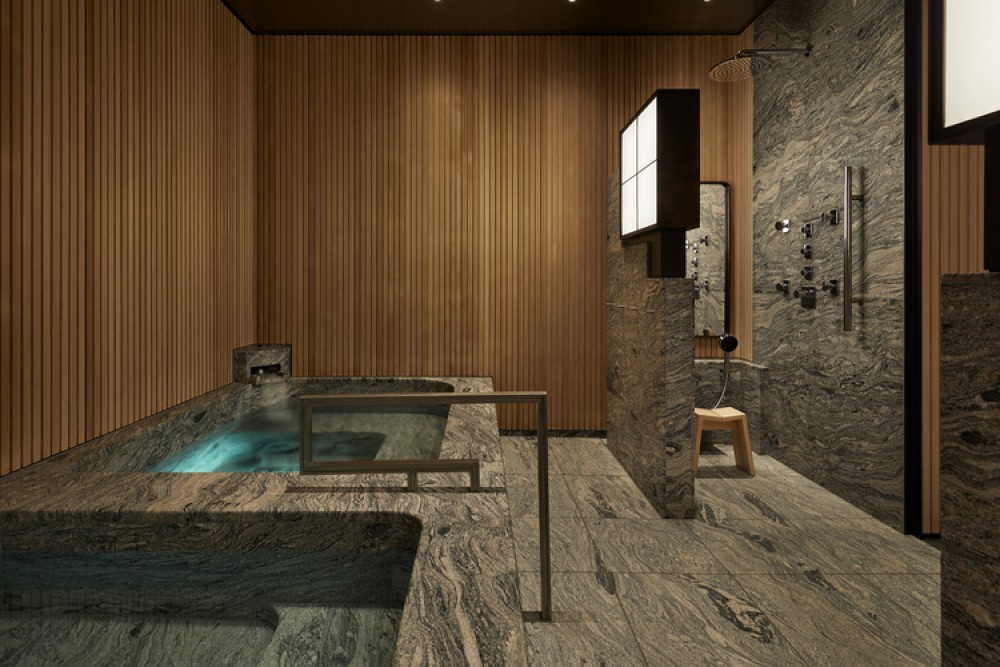
So, you see, there is almost no reason to leave the hotel because tradition, culture and nature are so masterfully combined. Take breakfast. The Japanese breakfast is done by Kyoyamoto for hotel guests who order it the day before. For those who prefer their breakfasts international, there is a paradisiacal spread replete with the juiciest Japanese fruit and vegetables at the Kyoto Bistro that serves also as a casual street-side café.
Then there’s lunch and afternoon tea in The Living Room. The space might look casual and laid-back but the food is of as exacting a standard as one would expect in Japan. The Bolognese is made from Omi beef, local to the region, and there is an uni seafood pasta that I had to write home about among other items on the lunch menu. But what really catches my eye is the afternoon tea set. There is no tea stand here. Drawing inspiration from Kyoto’s own rich tea tradition, the set is a series of reinterpreted haute wagashi. Each dish comes paired with its own tea. I try local cold-brew roasted tea – there’s of course the requisite whisked matcha as well as some nostalgic throwback options that my host says reminds him of when he would drink said tea when he got home from school. One of the more memorable courses is vanilla ice cream set on top of caramel popcorn with freshly whisked matcha poured on top.
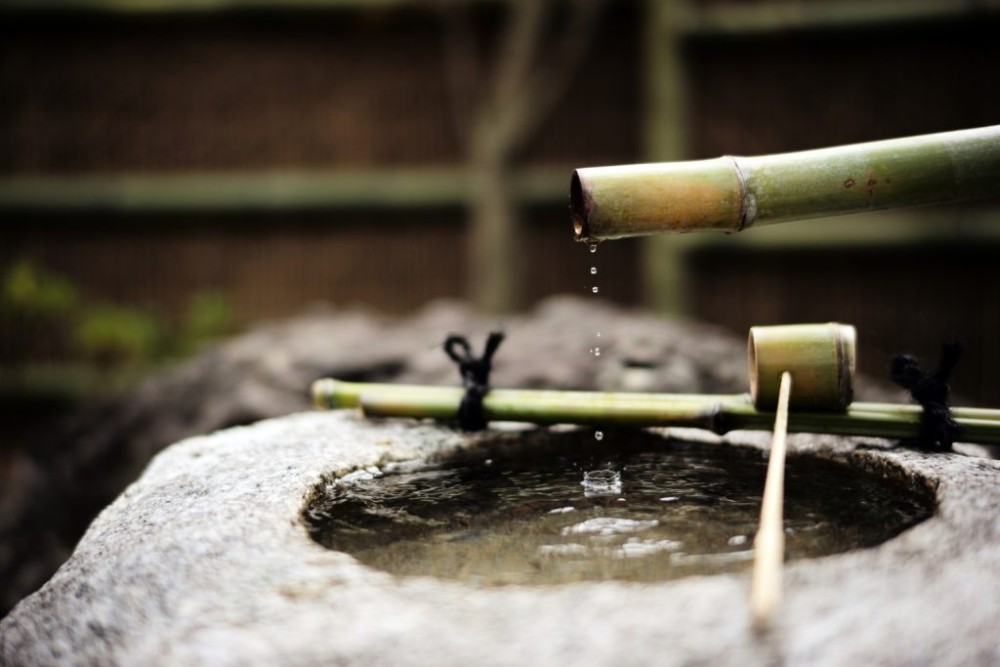
I’m also told that anyone looking for the authentic Japanese tea ceremony experience can book lunch at Kyoyamoto, where it’s the finale of the meal. We, on the other hand, choose dinner, because that comes with the option of inviting geiko to the party. Geiko is a nomenclature reserved only for geisha from Kyoto, where the art form originated. Kyoyamoto, with its 146-year history, has been serving kaiseki to politicians and dignitaries for most of its existence. The restaurant is sequestered in its own area on the hotel grounds and boasts a stunning view of the sunset, but between the geiko performances and games, it’s hard to really focus on the vista.
Of course, the Park Hyatt has a solution for this. The bar, Kohaku, and teppanyaki restaurant, Yasaka, are two intimate spaces where guests drink and dine overlooking the entire view of Kyoto, from the Yasaka Pagoda that lights up in the evening all the way to the surrounding mountains. Abalone, beef and all number of delicacies sizzle in front of me while I sip sake to the setting sun before venturing over for cocktails made by one of the most reputable bartenders in the city.

It’s hard to step foot outside. But, when in such a prime location, it would be remiss to stay in. So, I leave. I walk past tourists who stop outside the hotel and wonder what type of beautiful ancient structure it is before they spot the ebony sign ensconced between foliage that indicates it’s the Park Hyatt. I walk up the hills and past incense shops, ceramic shops, glassware shops and pickle shops to visit the neighbouring temples, of which there are three within 15 minutes’ walking distance. I come back and begin wandering into the stores, buying matcha and local fare, sweaty from tramping up and down the hills to visit craftsmen who still have their shops in the area despite the heavy tourist footfall.
I visit a kintsugi craftsman at Poj Studio to understand more about the Japanese art of repair. I visit Tofukuji, one of the many temples in Kyoto where the hotel concierge can arrange a meditation or tea ceremony with Zen monks on site. But, as soon as I’m back on the small path that leads me along the driveway and to the entrance of the Park Hyatt Kyoto, I know I’ll be stepping back into a slice of the city where it will all slow down to its own unique pulse.
Also see: New Maldives resort opens near UNESCO Biosphere Reserve blue waters



